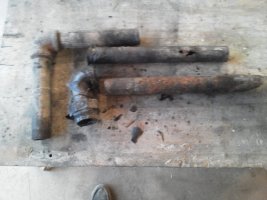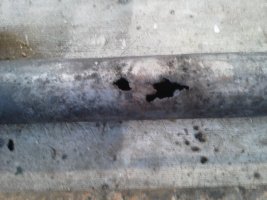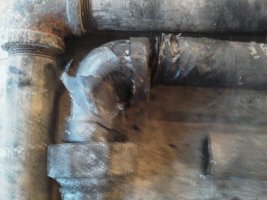Randy Rutledge
Sustaining Member
My exhaust riser has a rust through in the exhaust tubing before it enters the water jacket, looks like the unit was made with 1 1/4" thin wall tubing, when the tubing was threaded the threads almost cut through the tubing.
I plan to cut out the exhaust and reuse the water jacket that appears to be sound schedule 40 tubing. Should I use galvanized or black pipe this, my guess is galvanized will last longer.
I plan to cut out the exhaust and reuse the water jacket that appears to be sound schedule 40 tubing. Should I use galvanized or black pipe this, my guess is galvanized will last longer.




